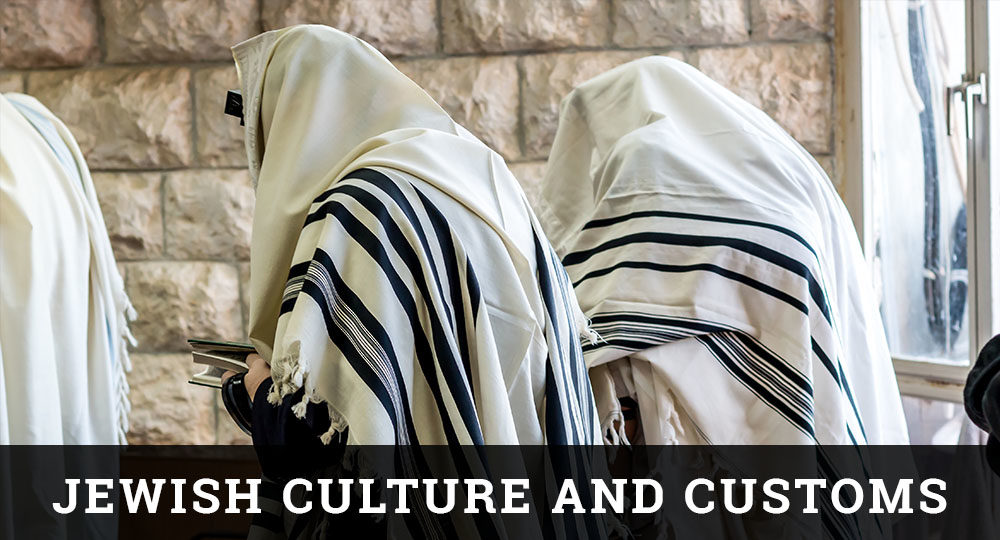Fussy Fressers
Food is an integral part of Jewish life. One man explained it this way: “For our people, food is more than a necessity of life; it is an emotional experience.” Fressen is a Yiddish/German word that describes a way of eating. To fress is to eat in a hurry or to eat noisily. A fresser is a person who eats in such a manner. For that reason, the word appears on menus in many Jewish restaurants and delis to convey the idea of the relish with which their food is to be enjoyed.
There is a threefold reason for the importance and significance attached to food in the Jewish culture. First, God was very specific in His revelation concerning what is kosher—fit or proper—to eat. Second, certain foods are used to celebrate special feast days and other historic Jewish events. Third, a warning of judgment appears in the Talmud for those who fail to enjoy the good things made available to them.
So what is “Jewish” food? If you walked the streets of New York, Los Angeles, Chicago, or even Tel Aviv or Jerusalem, you would see Jews eating everything from pizza to Chinese food (kosher, of course) and enjoying it. A diverse diet has been part of the Jewish experience since the diaspora in AD 70. Using the rules of Kashrut (laws for food), combined with the cuisine of the country of residence or origin, the Jewish diet is not only unique but varied.
Jewish cookbooks abound, featuring recipes that are as easy to prepare as they are mouthwatering. This article will describe and explain some common Jewish dishes. In the next issue we will deal with holiday and feast dishes.
The best way to get acquainted with Jewish cuisine is to visit a Jewish restaurant or delicatessen. It is a wonderful experience, worth every effort made to accomplish it. So come with me, if you will, to Bernie’s, or Lou’s, or Al’s. The decor is strictly out of the 50s—not nostalgically, but genuinely so. A huge deli counter stocked with savory foods stands to one side. Waitresses and customers desiring food to go bark out their orders: The rest of the room is occupied by people seated in booths, conversing enthusiastically with each other. It is the kind of place where you can sit, watch, listen, and be thoroughly entertained.
As you peruse the menu, a puzzled look comes over your face. You must have some of the items translated. If it does not happen forthrightly, you will be forced to do what one gentlemen did when he saw the menu. So overwhelmed at the offerings, he ordered the only item familiar to him, a toasted cheese sandwich. But don’t fret, stay calm. Those strange words do represent real food—wonderful, delicious food. So try it. You’ll like it!
Under the heading of Brunch you will see the word lox. Taken from the German lacks and the Scandinavian lax, lox is smoked salmon. Lox is either regular (salty) or nova (less salty). I call it “Jewish gold” because of its high price and wonderful taste. Lox is eaten most commonly on a bagel (a doughnut-shaped roll) with cream cheese, onion, and tomato slices. Served with scrambled eggs and onions, it is out of this world.
Also on the brunch menu are salami and eggs; matzo brei (eggs combined with unleavened bread); and knish (pronounced ken-ISH), a pocket of dough filled with your choice of potatoes, cheese, onions, pineapples, or just about anything else you might want.
Looking at the lunch menu we see some sumptuous items: chicken soup (sometimes called “Jewish penicillin”) with your choice of matzo balls (dumplings made of unleavened meal, water, and eggs) or kreplach (a pastry pocket stuffed with meat). Or how about a sandwich made with pastrami, corned beef, chopped liver, or tongue? Breads for sandwiches are diverse—bagels, kaiser (hard) rolls, bialy, pumpernickel, or rye, to name a few. Every sandwich comes with a pickle, but not just any pickle. It’s a kosher dill pickle, the best of all pickles, especially if it has been cured in a wooden pickle barrel.
To wash down that lunch you must have a chocolate phosphate (seltzer mixed with chocolate sauce). On the east coast, milk is added to create a chocolate cream. At many delicatessens, Foxes U-BET is the chocolate sauce of choice for phosphates.
Dinner foods are varied and delicious. Chicken is ever-popular, whether roasted, boiled, broiled, or stuffed. Various beef dishes are offered, such as flanken (short ribs), stuffed veal breast, stuffed peppers, and brisket. Leg of lamb, breast of lamb, and lamb kabobs are also common.
Side dishes that complement these entrees are varied and tempting. Kasha (buckwheat) varnishkas (bow-tie noodles), farfel (toasted pasta dough), and kugel (noodle pudding) are just a few.
And who doesn’t like dessert? Honey and coffee cakes are the best, but you should also try the mandelbrot (almond bread cookies). The cookies are best when they are rock hard, dipped in a steaming cup of coffee. Rugalach are delectable pastries filled with raisins, prunes, poppy seeds, almonds, or any number of sweet fillings.
So, what’s your pleasure? Whether you just want to nosh (snack) or go ahead and fress, try one of these delicious Jewish delicacies. You’ll have a new appreciation of our culture.








